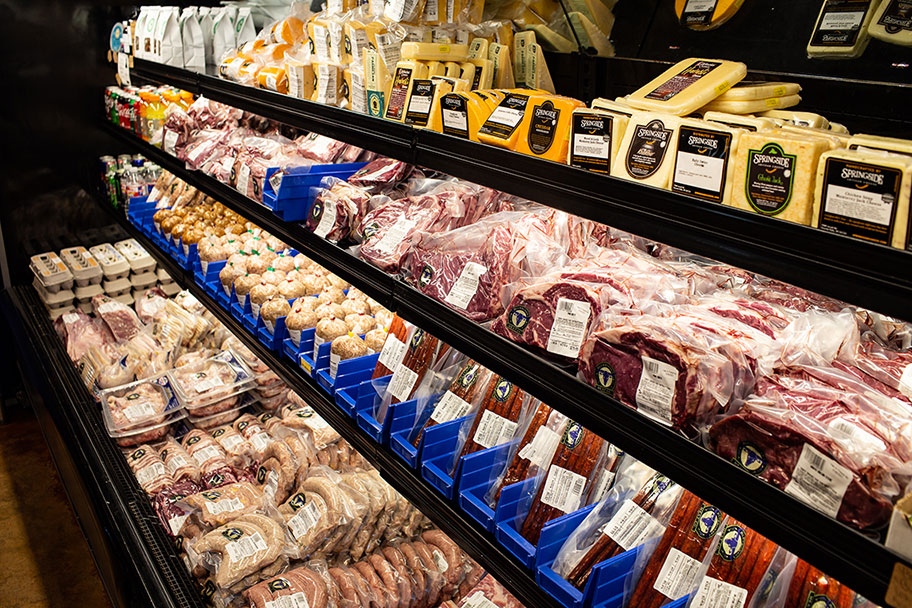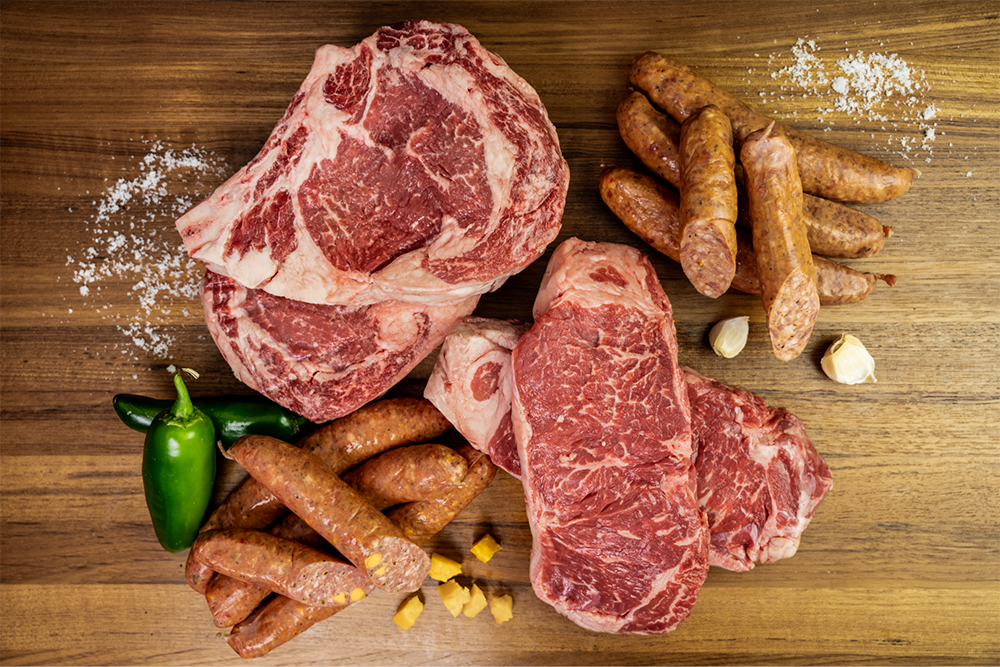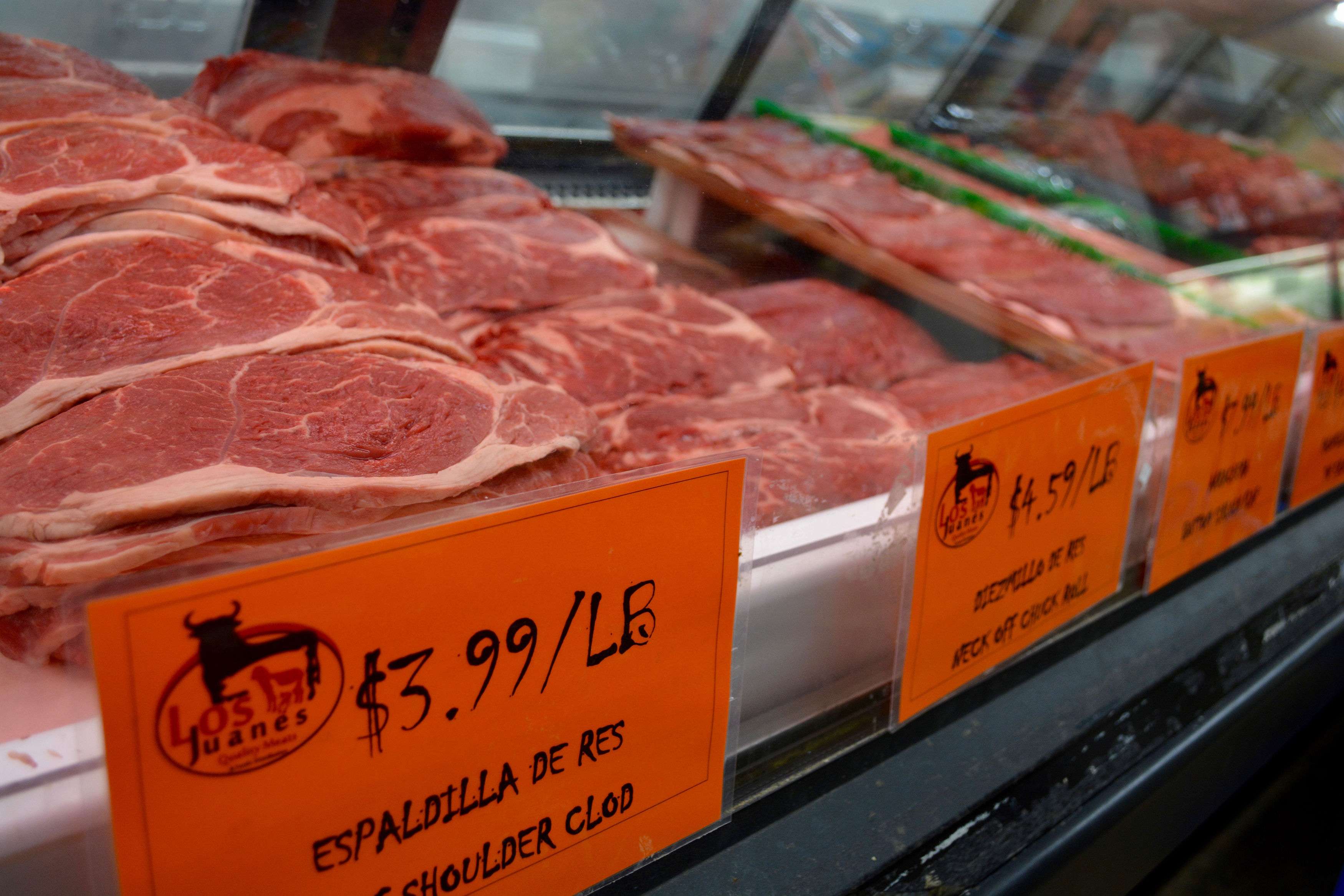Reveal the Art of the Butcher's Cut in a Modern Meat Market
In the ever-evolving landscape of contemporary meat markets, the butcher's cut has transcended its conventional roots, merging old-time workmanship with modern practices. bagley farms meat market edwardsville il. Today's butchers are not just cpus of meat; they are well-informed artisans that highlight sustainability and moral sourcing. Their knowledge in choose and preparing cuts customized to specific cooking demands supplies an unrivaled eating experience. What really sets the modern butcher apart is their ability to forge a much deeper link in between customers and the origins of their meat. How do these masters balance practice with technology, and what implications does this have for the future of meat intake?
Evolution of Butchery Strategies

The mid-20th century saw butchery techniques additionally refined by scientific understandings into muscular tissue biology and meat aging, enhancing both inflammation and taste. Advancements like vacuum cleaner packaging and refrigeration prolonged product shelf-life, allowing butchers to expand offerings and improve high quality control. This period also noted the surge of specialized tools, such as band saws and meat slicers, which raised precision and effectiveness in meat processing.
Computerized systems currently help in tracking animal provenance and enhancing cuts to satisfy specific consumer preferences. Additionally, a revival in artisanal butchery has actually emerged, mixing standard abilities with modern-day expertise to provide to consumers looking for honest and lasting meat alternatives.

Comprehending Meat Cuts

Understanding the intricacies of meat cuts is crucial for both butchers and customers seeking quality and value. For butchers, exact cuts show ability and respect for the craft, ensuring minimal waste and optimal return.
The primary groups of meat cuts include primitive, sub-primal, and retail cuts. Primal cuts, such as the loin, rib, and chuck, are the large sections initially separated from the carcass. Butchers after that break these down further right into sub-primal cuts, before lastly generating retail cuts available to consumers, like ribeye or tenderloin. Each phase needs mindful attention to physiological framework and muscle composition.
Comprehending muscular tissue composition is important; muscular tissues utilized much more regularly by the pet have a tendency to be tougher and are best fit for sluggish food preparation techniques, while less-used muscles, like those found in the loin, are much more tender and suitable for barbecuing or roasting. Familiarity with these differences empowers consumers to make educated choices, enhancing their culinary undertakings.
Selecting Quality Meat
Selecting the right meat entails even more than simply picking a visually attractive item from the display screen. The art of picking top quality meat needs a discerning eye and expertise of details features that signify freshness and excellence. Pay attention to the color; beef needs to have a brilliant, cherry-red color, while lamb ought to exhibit a soft pink tone, and pork a pale pink. This shows the meat is fresh and hasn't been revealed to oxygen for also long.
Secondly, take into consideration the marbling, which describes the white flecks of fat within the muscle. Proper marbling is a key indication of inflammation and taste, as it thaws during food preparation, enhancing the meat's juiciness. Remember, greater marbling often correlates with premium top quality cuts, such as USDA Prime.
Structure is an additional essential aspect; meat needs to really feel strong to the touch, not slimed or overly soft. Additionally, bear in mind the aroma. Fresh meat needs to have a clean, neutral odor, without any type of sour or repulsive odors.
Matching Cuts With Food Preparation Techniques
Successfully coupling cuts of meat with the suitable food preparation methods is essential for accomplishing optimal flavor and texture. Various cuts vary in inflammation, marbling, and connective tissue material, each calling for particular techniques to unlock their potential. Tender cuts like filet mignon and ribeye, with their inherent marbling, benefit from high-heat, quick-cooking techniques such as barbecuing or pan-searing. These approaches boost the meat's all-natural tastes and ensure a juicy coating.
Conversely, tougher cuts like brisket and read more chuck roast are rich in collagen, which damages down into gelatin when cooked gradually. These cuts are ideal for braising or slow-moving roasting, allowing the meat to tenderize over time and create deep, complicated flavors. Likewise, cuts such as short ribs and pork shoulder prosper with slow-cooking techniques, where prolonged cooking times change their robust structures into delicious recipes.
Lamb shanks and oxtail, which require long term cooking to tenderize, are ideal candidates for cooking or sluggish simmering. These techniques coax out abundant, hearty tastes while maintaining wetness. By understanding the distinct qualities of each cut, chefs and home chefs alike can raise their culinary creations, making certain each meal is both satisfying and memorable.
The Butcher's Duty Today
Browsing the progressing landscape of the modern meat market, the butcher's function today prolongs beyond simple prep work of cuts. Contemporary butchers are culinary artisans, educators, and advocates for lasting methods. They link the space in between the straight from the source farm and the fork by making sure honest sourcing, recognizing animal husbandry, and prioritizing openness in the supply chain. This change shows the expanding consumer demand for quality over amount, where provenance and animal well-being are extremely important.
In enhancement to crafting accurate cuts, butchers now engage straight with consumers, offering cooking recommendations and tailoring choices to fit individual needs and choices. Their proficiency in meat aging, marbling, and taste accounts equips consumers to make enlightened choices, boosting their cooking experiences. This customized service exemplifies the butcher's progressing role as a trusted advisor in the kitchen area.
Furthermore, butchers are essential in reducing waste, utilizing entire pets to develop varied items such as sausages and supplies - bagley farms meat market edwardsville il. This comprehensive strategy not only respects the pet yet additionally lines up with modern sustainability goals. By important link doing this, the modern-day butcher embodies both practice and innovation, adapting to an ever-changing market while preserving the artistry and honesty of their craft

Verdict
Proficiency in understanding diverse meat cuts and quality indications empowers butchers to provide enlightened recommendations, lining up particular cuts with ideal cooking approaches. By recognizing historical techniques while embracing contemporary demands, the butcher's function remains essential in today's innovative meat market.